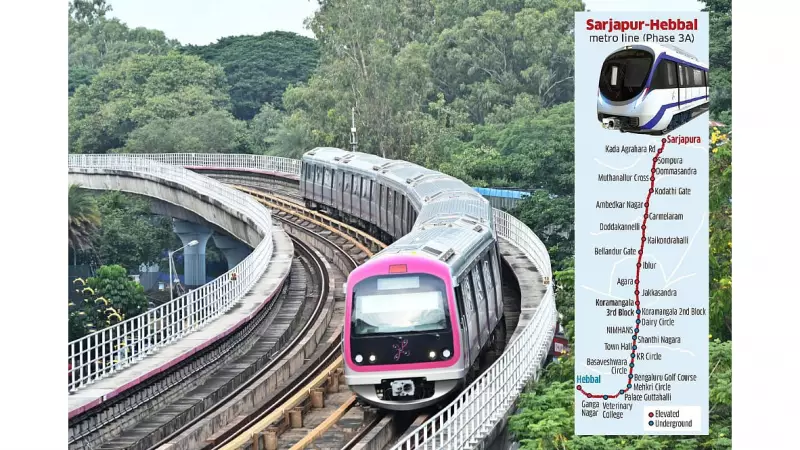
In a strategic move to optimize costs without compromising functionality, Bengaluru's Namma Metro has implemented a significant design change for its upcoming Phase 3A expansion. The Bangalore Metro Rail Corporation Limited (BMRCL) has decided to reduce the length of underground stations by approximately 40 meters, a decision projected to yield substantial financial savings.
The revised design maintains the same platform length of 210 meters but shortens the overall station structure from the originally planned 260 meters to 220 meters. This 15% reduction in station length represents a carefully calculated engineering solution that preserves operational capacity while trimming unnecessary construction costs.
Engineering Efficiency Meets Fiscal Responsibility
According to BMRCL officials, the decision follows thorough technical analysis that revealed opportunities for optimization in station design. The shorter stations will still accommodate standard six-coach trains comfortably while reducing excavation, construction material, and maintenance expenses significantly.
The cost-saving measure comes at a crucial time as Bengaluru continues to expand its metro network across the rapidly growing city. Phase 3A, which includes key routes connecting ORR to the airport and other high-traffic corridors, represents one of the most ambitious infrastructure projects in Karnataka's recent history.
Smart Urban Planning for Future Growth
Metro authorities emphasize that the design modification won't affect passenger experience or train operations. The core functional areas including platforms, concourses, and passenger facilities remain unchanged in the revised plans.
This approach demonstrates how urban infrastructure projects can achieve financial sustainability through intelligent design optimization, setting a precedent for future metro expansions across Indian cities facing similar budget constraints.
The implementation of these cost-effective measures ensures that Bengaluru's metro expansion remains on track while maximizing the value of public investment in urban transportation infrastructure.





